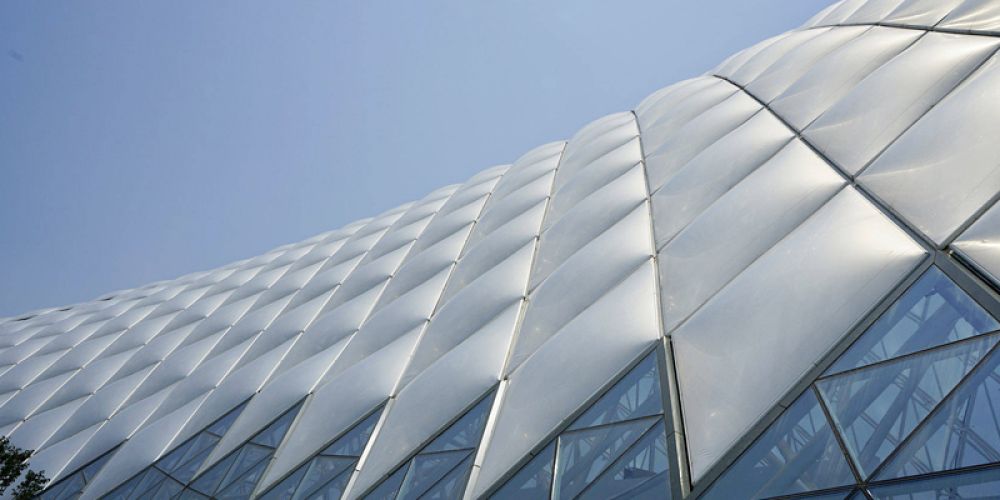
New Building Application Membrane Materials Mainly Include the Following Types:
PTFE/PVC Polyester Fiber Membrane:
Developed by Germany's Durteks Membrane Company, this material features PTFE coating on one side and PVC coating on the other. It combines the self-cleaning properties of PTFE membranes with the flexibility of PVC membranes, significantly enhancing overall performance.
Pure PTFE Membrane:
A fully PTFE-based material where the base fabric is coated entirely with PTFE. Exceptionally soft and foldable, it can be spliced using methods similar to PTFE glass fiber membranes. Offers a light transmittance of up to 40%.
ETFE Membrane:
Available in fully transparent and semi-transparent variants, this substrate-free membrane is typically used in inflatable double-layer configurations. With 95% light transmittance and high impact resistance, it is renowned as "soft glass."
PTFE-Laminated Glass Fiber Membrane:
Constructed by laminating two PTFE layers onto glass fiber mesh under high temperature and pressure, this material achieves over 50% light transmittance, making it the ideal choice for light-transmitting engineering projects.
Acoustic Membrane:
Utilizes specially woven glass fiber mesh with specialized coatings to provide sound absorption and insulation effects.
Building Insulation Membrane:
Features high-efficiency thermal insulation, effectively blocking outdoor heat and UV radiation while maintaining comfortable indoor temperatures. Energy-saving and eco-friendly, it reduces air conditioning usage and lowers energy costs for homes and businesses.
Roofing Membrane:
Boasts superior waterproofing and UV resistance, preventing rainwater infiltration and protecting roofs from weathering. Suitable for waterproofing rooftops, roof gardens, terraces, and balconies.
Floor Moisture Barrier:
Effectively isolates ground humidity to prevent floor warping, deformation, and mold growth. Offers slip resistance and durability, ensuring a safe and healthy living environment.
Geomembrane:
Demonstrates exceptional tensile strength, elongation, and corrosion resistance. Prevents soil erosion, water loss, and groundwater seepage, ensuring project stability and safety. Widely used in roads, bridges, tunnels, reservoirs, and other civil engineering protections.
Greenhouse Film:
Provides excellent light transmission, thermal retention, and durability. Optimizes temperature, humidity, and light conditions for crops, enhancing yield and quality. Ideal for agricultural applications including vegetable, fruit, and flower cultivation.
Silicone-Coated Glass Fiber Membrane:
Incorporates silicone resin with superior temperature resistance, water repellency, and oxidation resistance. Features high tensile strength, elastic modulus, and good light transmission.
Synthetic Rubber Membrane:
Offers excellent flexibility with stability against sunlight, ozone, and thermal aging. Notable for abrasion resistance, chemical resistance, and flame retardancy. Typically used in dark coatings due to potential yellowing in transparent applications.
Nonwoven Composite Membrane:
Combines nonwoven fabrics with functional microporous membranes (e.g., PTFE). In construction, when paired with polyether microporous membranes, it creates exterior wall materials with integrated waterproofing and breathability.